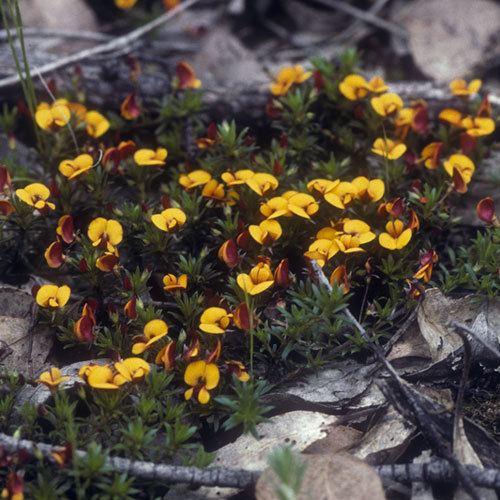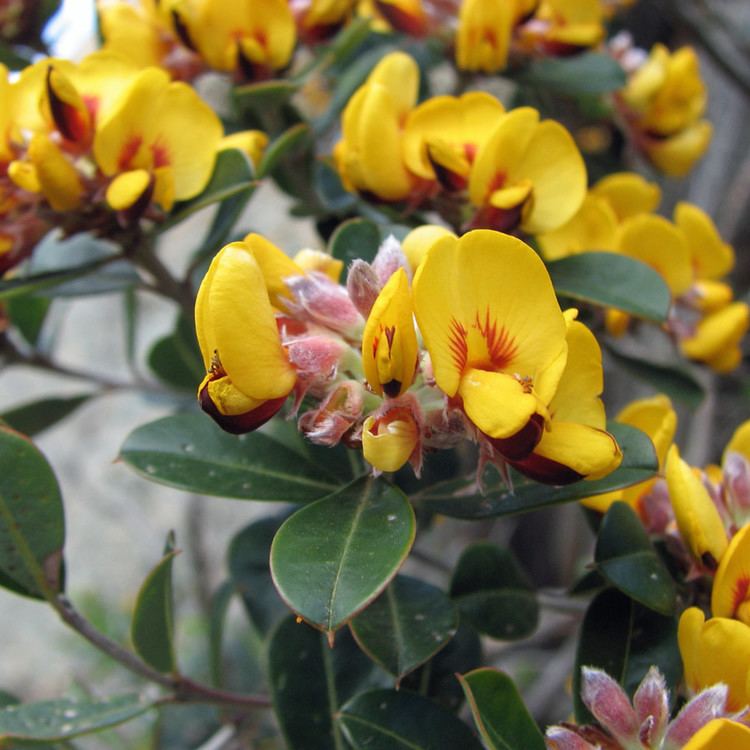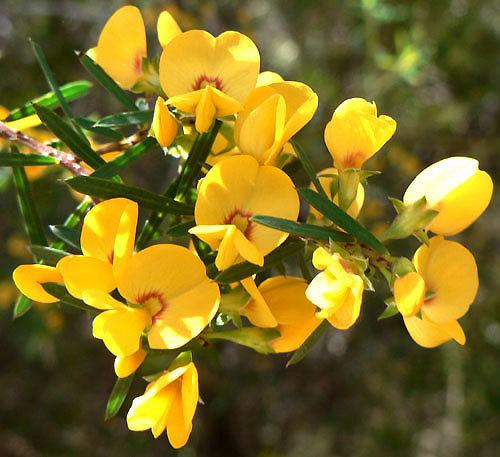Scientific name Pultenaea Rank Genus | Higher classification Faboideae | |
 | ||
Similar Legumes, Daviesia, Pultenaea daphnoides, Bossiaea, Dillwynia | ||
Pultenaea garden plants
Pultenaea is a genus of flowering plants in the family Fabaceae-Faboideae that are native to Australia. They are known commonly as bush peas.
Contents
- Pultenaea garden plants
- Taxonomy and Phylogeny
- Phylogeny
- Speciation
- Species
- Distribution and habitat
- Ecology
- Cultivation
- References

The genus is found in south west Western Australia and the eastern states. It is not considered to be monophyletic with suggestions of splitting it into six separate subgenera, under a larger genus of Pultenaea sensu lato, which would include 19 out of 25 genera included in the former tribe Mirbelieae. The genus underwent explosive starburst radiation, with biogeographical divisions due to the Nullarbor Plain and the winter/summer rainfall boundary. Some species rely on fire regimes for germination, and are an understorey dominant and nitrogen fixer.

Taxonomy and Phylogeny

The genus was first formally described by botanist James Edward Smith in 1794 in A Specimen of the Botany of New Holland, with Pultunaea stipularis nominated as the type species. The latter was described from a living specimen which was raised in Stockwell, England from seed obtained from New South Wales in 1792. Smith named the genus in honour of Richard Pulteney, an English surgeon and botanist, who also was the biographer of Linnaeus.
Phylogeny
Pultenaea belongs to the Mirbelioid clade of the legume subfamily Faboideae. Pultenaea is paraphyletic with respect to several of the other mirbelioid genera. Molecular phylogenetics supports 7 clades within the current circumscription of Pultenaea:
Speciation
The Mirbelioids have had long isolation in Australia from other Fabaceae families. Pultenaea Sm. underwent explosive starburst radiation during the late Miocene, due to aridity. Geographic speciation factors include east vs. west endemism due to increased aridity and the development of the Nullarbor Plain; subgenera Pultenaea and Corrickosa of eastern Australia split along the Winter–Summer rainfall boundary; subclades within Corrickosa diverged due to marine incursions between South Australia and Victoria. Western Australian species include disjunctions between north and south, and Esperance/Cape Arid. Recent extinctions, possibly due to changed fire regimes and grazing pressure, include P. elusa and P. maidenii.
Species
Species include:
Distribution and habitat
Pultenaea Sm. are restricted to south west Western Australia and temperate and tropical regions of the eastern states of Australia. They are found in sclerophyllous vegetation types varying from forests to heath lands, but absent from arid interior and rainforest regions. Its distribution indicates that the genus is limited by water (arid regions) and sunlight/competition (tropical regions). Eastern Australia contains 87 species,while Western Australia contains 27 species. Four species are found in both regions.
Ecology
Pultenaea species are understorey dominants, play a role of nutrient cycling as nitrogen fixers, and are an important food source for invertebrates. Like many species of Fabaceae, hard-seeded Pultenaea species require fire for germination and recruitment e.g. P. williamsoniana. A periodic fire regime of at least ten years is needed to allow for maturity. Pultenaea species can be locally abundant, and are abundant along roadsides, possibly due to increased light or disturbance. Threats include clearance and fragmentation of habitat, inappropriate fire regimes, weed invasion, and grazing, which may have led to extinctions of P. elusa and P. maidenii
Cultivation
A number of species are cultivated for their spring flower display. Most of these are fast-growing and adaptable to diverse growing conditions. Propagation is from semi-mature cuttings or seed pre-treated by soaking in hot water.
Three cultivars are registered with the Australian Cultivar Registration Authority:
